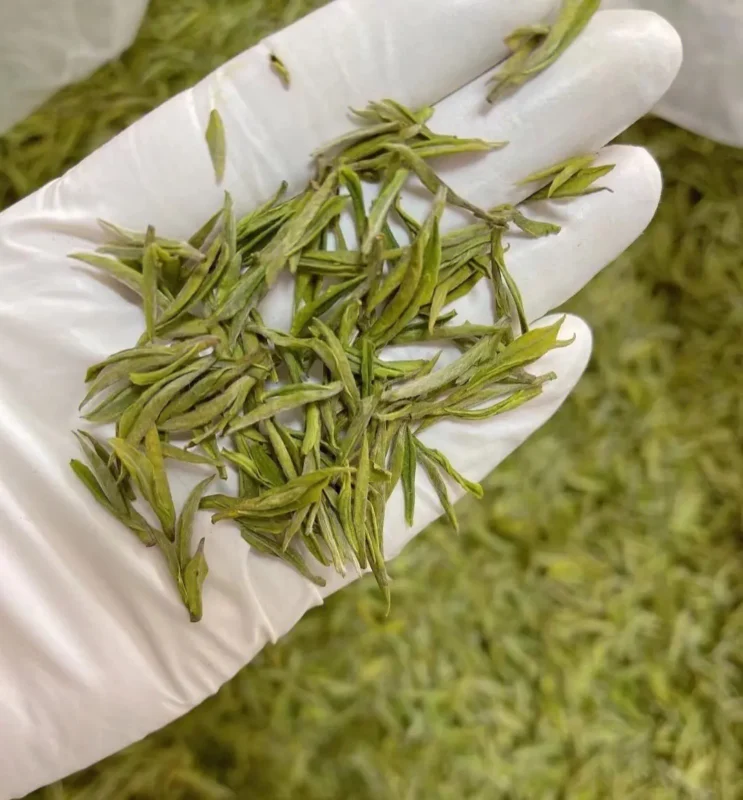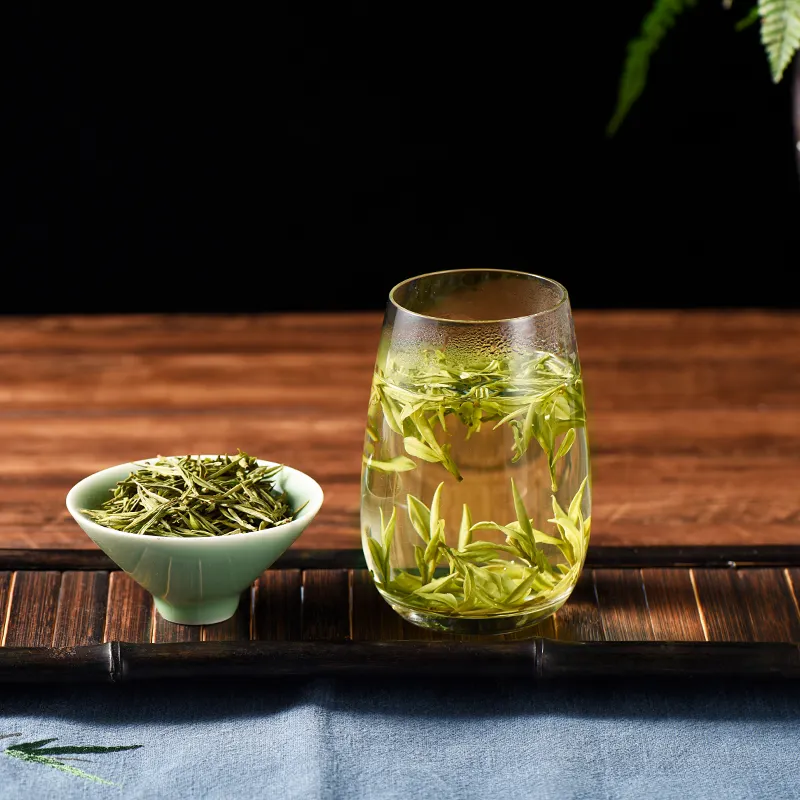Many people have only heard of Anji white tea by name but have no idea about its taste. Anji white tea sounds like white tea by its name, but it doesn’t belong to white tea. Instead, it is a type of green tea. So, Anji white tea is green tea, not white tea!
On the mountains at an altitude of 800 meters, among the emerald green tea mountains, there is a touch of white. This is Anji white tea, like the clouds and mists in the mountains, which makes people feel relaxed and happy. Compared with other green teas, the amino acid content is several times that of other green teas, and the polyphenol content is less than that of other green teas. Therefore, Anji white tea tastes fresh and pleasant, and there is no bitter taste even after prolonged brewing. It is more suitable for people with a light palate.
Why is it called Anji White Tea?
The fresh leaves picked for Anji White Tea are from the “Baiye No.1” variety, which is a rare and unusual mutant tea species. The fresh leaves before the Pure Brightness Festival in spring are mostly white, and they turn into jade-white with green veins before the Grain Rain. Before the Summer Solstice, they are mottled with white and green, and after the Summer Solstice, the leaves become all green, no different from ordinary green teas. Anji White Tea has a very distinct feature that when the dry tea is brewed with water after processing, the bottom of the leaves shows a jade-white color. It is named Anji White Tea based on this characteristic.
The processing techniques of Anji White Tea
The manufacturing process of Anji White Tea generally includes the main procedures such as picking, spreading, de-enzyming, shaping, initial baking, cooling, and re-baking. Picking: Usually, fresh leaves with one bud and one newly expanded leaf to one bud and two leaves are picked. Spreading: Evenly spread the fresh leaves on bamboo trays or in well-ventilated places to make them lose a little water. De-enzyming: Destroy the activity of enzymes in the fresh leaves through high temperature to prevent the oxidation of polyphenols. Shaping: Make the appearance of the tea leaves neat. Initial baking: Preliminarily dry the tea leaves to reduce the moisture content. Cooling: Allow the tea leaves to dissipate heat and become soft again. Re-baking: Further dry the tea leaves to achieve the appropriate moisture content.
The early spring Anji White Tea of 2024 has the highest theanine content among green teas and is hailed as the “Queen of Green Teas”. It has a tender green and bright color, a lasting delicate fragrance, a fresh, mellow and sweet taste, full of amino acids and a lingering aftertaste. It has the rich floral and fruity aroma unique to early spring tea. After brewing, the bottom of the leaves of Anji White Tea shows a jade-white color with a prominent bean aroma. It’s truly as smooth and soft as chicken soup!
How to store Anji white tea?
The storage of Anji white tea is the same as that of green tea. After sealing, it can be stored in a refrigerator without peculiar smell in spring, summer and autumn. In winter in cold areas, it can be stored in a dry, sealed, cool and odorless environment.
Tips for selecting Anji white tea. Tea is something to be consumed. When we select tea, we should try to choose organic tea or early spring tea, which can effectively avoid buying tea with pesticide residues.
Brewing steps:
1. After cleaning the glass, warm and rinse the cup with boiling water once to increase the temperature of the cup.
2. Put about 3g of Anji white tea, hold the mouth of the bottle and shake it left and right to make the dry tea hit the cup and create the dry tea aroma. At this time, you can smell the refreshing fragrance of beans and flowers.
3. Add slightly cooled boiled water (about 85℃). For 3g of dry tea, about 330ml of water can be added. There are various ways of pouring water. You can add one-fourth of the water first, pour water in one direction to allow the tea leaves to initially absorb water and slowly unfold. You can also add water all at once, pour water up and down, and you can observe the rolling and rotating posture of the tea leaves. Then let it stand for one or two minutes before enjoying. Every time after drinking, add water. You can leave one-third of the previous infusion of tea in the cup, and then add more water, which can extend the drinking time of Anji white tea.




